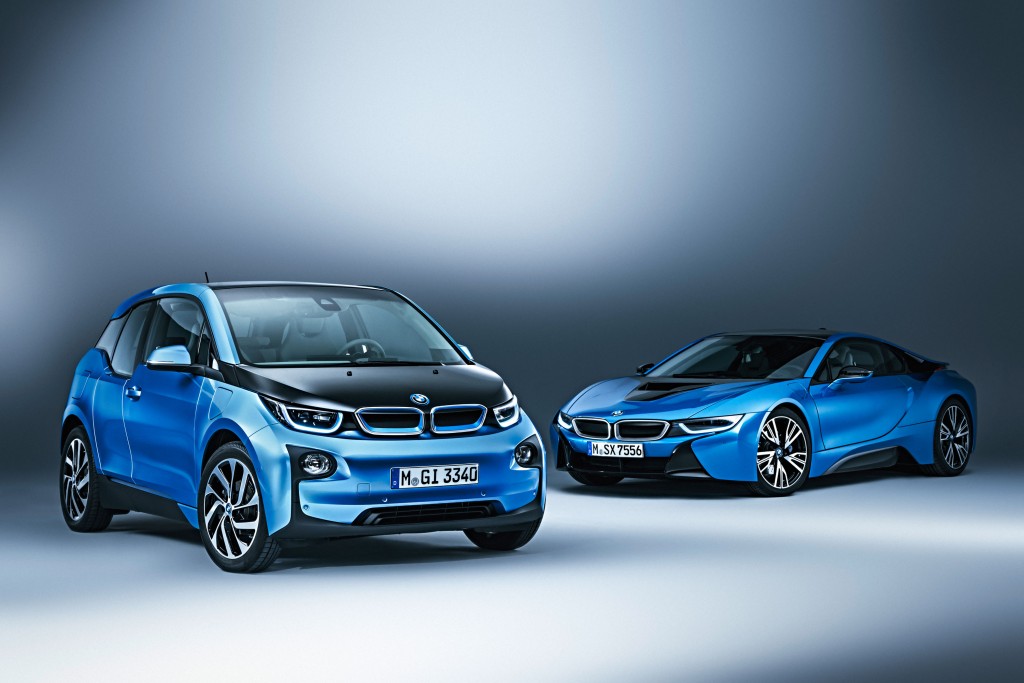The last 12 to 18 months have seen a slew of global automakers promising rafts of new plug-in electric vehicles on sale by deadlines set several years into the future.
Working to move past its worldwide diesel-emission scandal, for instance, VW Group has promised 30 battery-electric models on sale by 2025—the majority of them likely in China.
Last month, BMW joined the list with its own pledge.
DON'T MISS: BMW partners with Solid Power to develop solid-state cells for electric cars
The maker of "ultimate driving machines" said it will have a combined total of 25 different battery-electric and plug-in hybrid vehicles in the market by 2025.
The number came from a company presentation and interview late last year, as covered by the British outlet AutoExpress in early December.
A total of 25 vehicles globally isn't as much of a stretch for BMW as numbers cited by other makers: BMW already offers the battery-electric i3, the plug-in hybrid i8, and half a dozen plug-in hybrid versions of its production sedans and crossovers.

2017 BMW i3 and 2017 BMW i8
Internal BMW conventions indicate that its current electric cars—the 2017 BMW i3 with the larger 33-kilowatt-hour battery and the 2019 BMW i8 with a larger battery as well—are "Generation 4" of its electric-car program.
The fifth generation, according to the slides accompanying the AutoExpress piece, will be reworked versions of two basic BMW architectures that underpin virtually all of its cars.
Larger vehicles will use a new version of the so-called CLAR platform first introduced in the most recent 7-Series and 5-Series sedans, modified to accommodate two different thicknesses of battery packs under the cabin floor.
READ THIS: BMW 'i' electric-car sub-brand to expand into SUVs, utility vehicles, with 'iX' models
Smaller vehicles will use a modified version of the UKL front- or all-wheel-drive platform that underpins all current Mini Cooper models and the BMW X1 crossover.
It will be called FAAR, and will also accommodate two different battery heights.
According to BMW, while vehicles batteries under the floorpan will sit taller, that can be accommodated just by enlarging the wheels to keep the vehicles in proportion.
![BMW Group's vehicle electrification pathway [Dec 2017 presentation] BMW Group's vehicle electrification pathway [Dec 2017 presentation]](https://images.hgmsites.net/lrg/bmw-groups-vehicle-electrification-pathway-dec-2017-presentation_100640978_l.jpg)
BMW Group's vehicle electrification pathway [Dec 2017 presentation]
![BMW electrified vehicles from 2013 through 2025 [Dec 2017 presentation] BMW electrified vehicles from 2013 through 2025 [Dec 2017 presentation]](https://images.hgmsites.net/lrg/bmw-electrified-vehicles-from-2013-through-2025-dec-2017-presentation_100640979_l.jpg)
BMW electrified vehicles from 2013 through 2025 [Dec 2017 presentation]
![BMW plans single platform for all powertrain derivatives from 2021 onward [Dec 2017 presentation] BMW plans single platform for all powertrain derivatives from 2021 onward [Dec 2017 presentation]](https://images.hgmsites.net/lrg/bmw-plans-single-platform-for-all-powertrain-derivatives-from-2021-onward-dec-2017-presentation_100640980_l.jpg)
BMW plans single platform for all powertrain derivatives from 2021 onward [Dec 2017 presentation]
The first fifth-generation vehicle to use the CLAR platform will be the production version of the BMW iNext concept, a flagship sedan arriving in 2021 that will be fully electric and packed with self-driving and connectivity features.
One year prior, in 2020, an all-electric version of the BMW X3 will join the company's lineup.
There will also be additional plug-in hybrid variants of high-volume models, and updates to the existing ones, likely including higher-capacity batteries that could boost their EPA-rated ranges above their current 10- to 25-mile window.
CHECK OUT: 2017 BMW i3 REx: drive review of range-extended electric car
Like its German luxury competitor Audi, BMW says it expects up to 25 percent of its sales to be plug-in electric vehicles by 2025.
But Audi, part of the giant VW Group, has adopted that company's philosophy that while conventional vehicles with engines can be engineered to accomodate plug-in hybrid variants, battery-electric vehicles require their own dedicated platforms.
We interviewed Stefan Juraschek, BMW's head of electric powertrains, at the Detroit auto show last week—and we'll cover his thoughts on why BMW thinks it can use a single architecture for both types of plug-in vehicles in a future article. Stay tuned.
_______________________________________













